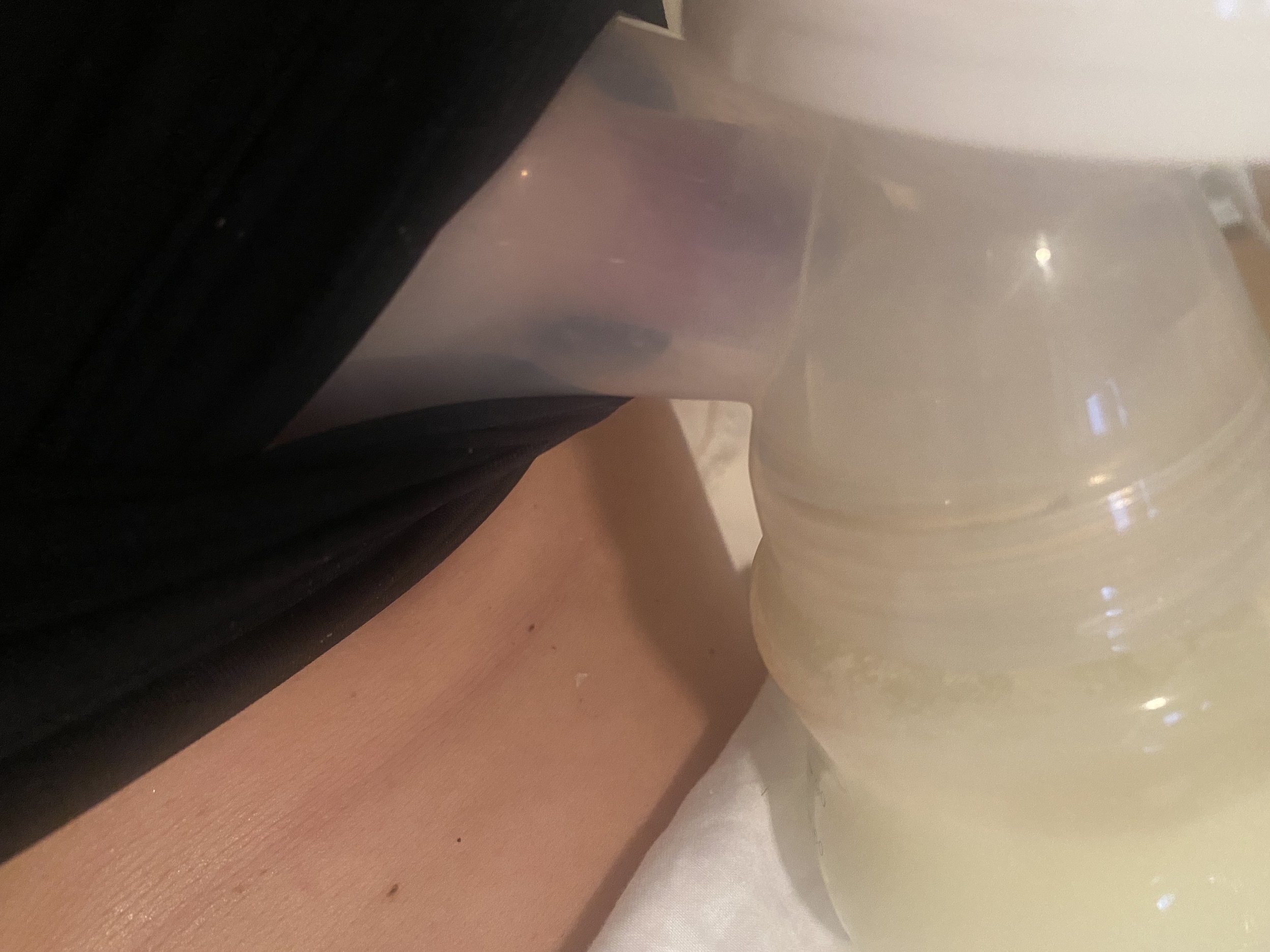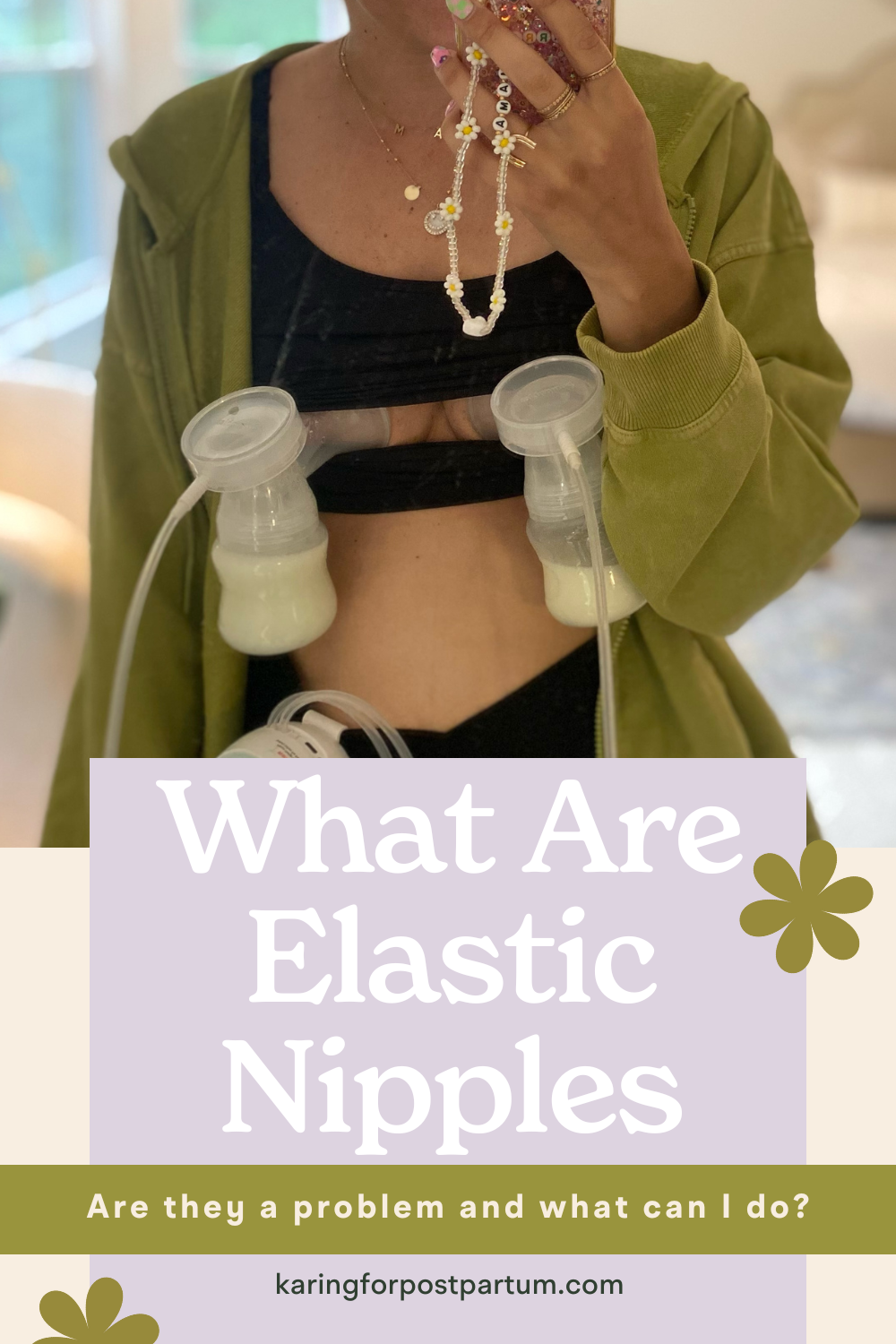Elastic Nipples: What are they?
Let’s talk about elastic nipples.
All nipples have some elasticity, as it needs to stretch to release oxytocin and elicit a “letdown” of milk. However, some women notice that their nipples seem to “stretch” more than others— sometimes causing them discomfort with pumping.
When a woman is nursing, it’s hard to “tell” if you have “elastic nipples” because you cannot see inside baby’s mouth. Plus, the nipple swells and stretches to fill the area between baby’s palate and tongue so that they can transfer milk effectively. When a woman is pumping, elastic nipples may be easier to notice because you can see the amount of stretching happening, and may feel some discomfort.
What does this look like?
Many women, when pumping, notice they have elastic nipples when their nipple swells to fill the entire flange tunnel and stretches to the end of the flange tunnel, even when they’re using the proper flange size!
Why is this a problem?
Having elastic nipple tissue isn’t “bad” or “uncommon”, but there are a few cons in some circumstances:
It can be uncomfortable
It can affect output over time
It can lead to damage with pumping— face of nipple constantly hitting end of flange tunnel can lead to bruising/tenderness/damage for some
If the provider helping isn’t familiar with elastic tissue, it’s easy to end up with the wrong flange size since it “appears” that you need to increase your flange size.
This happened to me! I actually ended up (over the course of a few months) being sized 10-12mm too big with my flanges due to discomfort and appearance with pumping, when in reality, I had elastic nipple tissue!
What can I do?
There’s nothing we can do to get “rid off” having elastic nipple tissue. However, there are a few things we can try and implement to increase output, reduce damage, and make pumping more comfortable!
First, I think it’s important to meet with a lactation professional who’s familiar with pumping and can help determine if this truly is a flange sizing issue (too big, too small), or if this is an elasticity circumstance
Try silicone flanges/shields or breastpump cushions— these help compress behind the nipple when pumping, which can lessen the overall pull of the nipple into flange tunnel
Try a longer flange— some women really love Pumpin’ Pals longer flange options so their nipple isn’t hitting the end of the tunnel consistently
I really like using the silicone shields for my regular flanges (Pumpables + Legendairy Milk both offer these) and I like using Beugen pump cushions in my Elvie or WillowGo (which both have a much shorter flange tunnel). Do keep in mind: when using pump cushions, it typically decreases your flange size by about 2mm (depending on brand). For example, if you’ve been sized and comfortably use a 19mm flange, then stick a Beaugen cushion in it: it will become a 17mm flange (too small for you!). Therefore, you’d need to place your Beaugen cushion in a 21mm flange (which would then decrease the size by 2mm, making it your 19mm flange!).
I have an entire Instagram highlight talking through elastic nipple tissue here.
Here are some of the items I have used, as well as other mamas in this community with elastic nipple tissue:
Personal Experience:
I have dealt with elastic nipples and used to think it was just “normal” for pumping to cause bruising on my nipples. I have seen countless lactation professionals and was continually told I needed to change my flange size. I think I tried every single size like 2 or 3 times hoping it would make things better! With each size, my nipples would swell and stretch the entire flange tunnel length. It didn’t matter if I went smaller, bigger, etc.
Finally, I started talking with one of the lactation providers I worked with and told her about it. We determined the size I needed based on measurement and the way I felt/things looked when pumping. However, my nipples still stretched the entire length of the tunnel. She stated that it looked like I actually had elastic nipple tissue, not the wrong flange size and recommended I try Lactek flanges or Pumpin’ Pals (I think these were the only available at that time). Boy has that been a relief! I am now able to pump comfortably with my appropriate flange size and use silicone shields or pump cushions to help prevent my nipple from hitting the end of the tunnel.
This post contains affiliate links. This means I will make a small commission when you purchase an item through one of the links (at no cost to you!). There is no obligation to purchase through them, but it is always appreciated! Thanks for being here!
Was this helpful? Save it for later!






